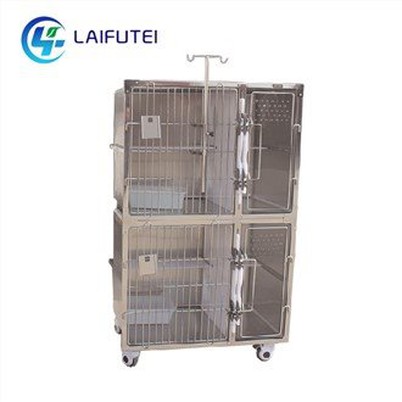What should I pay attention to when using a pet cage
Leave a message
Pet cages are one of the indispensable tools in pet keeping, which can provide a safe, hygienic, and comfortable living environment for pets to grow up healthy. However, when using a pet cage, what precautions should be taken when using a pet cage? The following is a detailed introduction.
1. Correct selection of pet cages
Different types of pets require different types of cages, and it is important to choose a cage that is suitable for your pet. Firstly, choose a pet cage that is suitable for the size of the pet. If the pet cage is too small, the pet will not be able to move from inside, and if the pet cage is too large, the pet will feel scared and at a loss inside.
2. Keep the pet cage clean and hygienic
Pet cages need to be kept dry and tidy to prevent the breeding of pet diseases. Generally, pet feces and food residue should be cleaned once a day, and the surface of the cage should also be cleaned every week. Do not use chemicals such as detergent or bleach, as these chemicals are very harmful to pets.
3. Provide sufficient activity space
Although pet cages can safely protect pets, pets still need sufficient space for movement. Even if a pet only needs to stay in a cage for a few hours, it needs to be given sufficient activity time. When the cage door is closed, pets should be prepared with some fun toys and rest pads to do things and have a comfortable environment.
4. Provide suitable dietary water sources for pets
At all times, pets need sufficient dietary water. When pets are in a pet cage, we need to pay special attention to their dietary issues because they cannot freely drink water like free pets. It is recommended to prepare a water dispenser for pets, regularly replace clean water sources every day, keep the water clean, and make it easy for pets to access.
5. Pay attention to maintaining ventilation in the pet cage
To ensure the comfort of the pet cage, we must have sufficient ventilation and air circulation. If the pet cage is not well ventilated, the pet may have difficulty breathing or get damp diseases. When the pet cage is in an internal environment with a higher temperature than the surrounding environment or with an infrared lighting system, special attention should be paid to maintaining ventilation.







